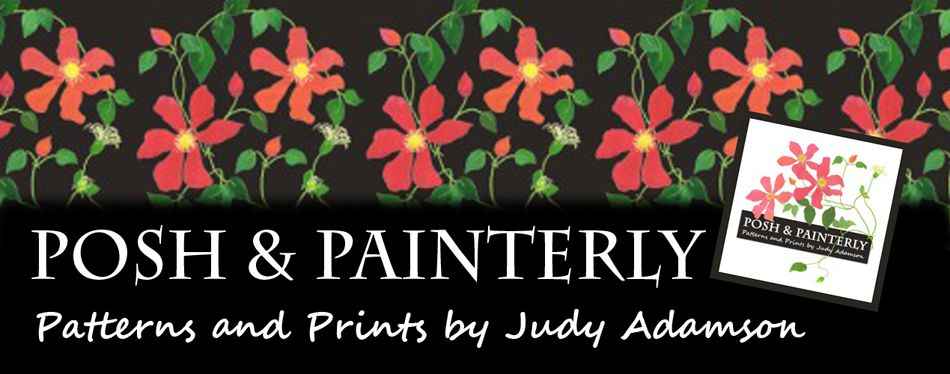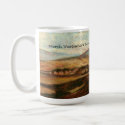A Question of Labelling!
When I was attending Adult Education Classes at Wensum Lodge, Norwich, more than twenty years ago, one of our tutors made us the offer of evaluating our portfolios. I had a great deal of self-doubt at the time, although something deep inside me was quietly insistent that my work had some value and was worth pursuing. After carefully perusing my assorted offerings, including the rather wishy-washy winter landscapes in watercolours that I was so proud of, our tutor, pronounced me a ‘designer’ rather than a ‘fine artist’.
I was crestfallen because of course I’d hoped that he would say I was the next Russell Flint but it also started me wondering about the difference between Fine Art and Design. Were the gorgeous watercolour poppies on my curtains ‘Fine Art’ or were they ‘Design’?
Sometimes the line separating the two is hard to define and trying to arrive at an answer sent me into a state of paralysis with my work for quite some time. Fortunately I was prompted by a neighbour to stop worrying about it and ‘just do it’!
But this question has been floating around in the back of my mind again in recent months, since I joined GCU and Zazzle. Mostly we refer to ‘artists’ in those environments but why not ‘designers’? And then, just to complicate matters further, there are ‘illustrators’.... and dictionary definitions aren’t really much help.
I’m wondering whether what separates Fine Art from Design or Illustration might be to do with the intention behind the work? It begins to make some sense if the intention behind Fine Art is simply to communicate, while the intention behind Design is to decorate a surface of some kind, fabric, china, stationery, greeting cards or to address the visual aspects of something of everyday practical use such as a car or a window-frame.
Of course the line is still very blurred. I have ‘created’ mugs for my Zazzle store using images that were intended as Fine Art.and offered them as prints as well.
Piet Mondrian is just one of many fine artists, whose work hovers around the border between Fine Art and Design - in fact, Google images brings up Mondrian's images used to decorate clothing, shoes and even a car as well as the 'artworks' themselves!
At what point does the original image change from being Fine Art to being Design?
Why am I bothered about this? Well, the obvious reason is that the human brain is wired to seek patterns and sort things into categories. But could it also be that the sting of that tutor’s words all those years ago is still lurking somewhere, nagging me to resolve it once and for all by making sense of it?
Any ideas?



10 comments:
I am afraid my comment won't be very structured and logical. Just a few random thoughts:
Designer, illustrator, fine artist - they are all artists in my opinion. Here in Germany we differentiate between "free art" (I think you would say fine arts) and applied arts like architecture and design.
Fine arts is still looked upon by many people as having a higher value - which I think is nonsense.
Some people say it is so because fine art doesn't serve a economical purpose. Fine artists don't talk about money--but they need it, too!
hmmm, my thoughts:
Sounds like the tutor had a definition worked out: one label meant someone's work was special and the other label meant the work wasn't so special.
>one of our tutors made us the offer of evaluating our portfolios
If you were in the position of evaluating someone's art, would YOU do such a thing? (knowing full well the impact of critiques on the sensitive artist)
If you found out that person had been shot down in a similar way, would you still believe the critique?
What would you have done differently if your art had been deemed Fine Art?
(p.s. love your blog thoughts!)
I don't think the difference is clear in anyone's mind because you hear them used interchangeably all the time.
But that was a good question Christina asked about what would you have done differently if he'd called it fine art, which may be linked to the previous posting about attitude.
Ulla- thank you for your explanation of how things stand in Germany. I think it would probably be simaliar in a college or university situation here too. Maybe the word 'applied' is really relevant in making the distinction between the two? But as in the case of Mondrian (and my coffee mug!) Fine Art can be 'applied' too!
I agree that the question of money is a nonsense! At a guess, I would think there are more very rich fine artists than designers!
Christina, I'm not sure that the tutor was actually assigning value to either fine art or design. I think I was the one who did that. But it was a while back and I see things very differently now - each has their place and, by a narrow margin, I prefer to be working in what Ulla has termed 'applied' arts, partly because I think there is too much 'hot air' talked about Fine Art!
Interesting question about what I would have done if I'd been told I was a Fine Artist. I think I would have ended up in exactly the same place as I am today, ie doing a bit of each. But I wouldn't have spent time worrying about it as I did at the time.
Carole, yes, we do use the term interchangeably and I think that indicates that the distinction isn't clearcut. And I think that's probably a good thing as it allows us to explore all sorts of ways of being creative. With hindsight, I believe the tutor was trying to be helpful and point me in the direction where he thought my strengths lay. He just didn't go about it in the most tactful way - I'm sure he didn't mean to upset me!
Tutors of any discipline should seek to discover their student's capabilities and stimulate them to do greater things.
Categorising something without explanation or discussion does nothing for the student's self esteem nor is it conducive to the creative process.
Sadly too many simply lecture, whether from the front of class or individually.
There are times when appropriate plain talking is important but usually constructive direction is more helpful.
Your tutor was unhelpful in so much as he was hurtful, albeit perhaps carelessly.
Had it been deliberate "tough love" calculated to provoke a reaction and refine your artistic character, that would have been hard to take. But it sounds more like egotistical pomposity that was only destructive and represents his failure as a tutor.
As a would-be musician in my youth I experienced much snobbery that nothing but "classical" had relevance.
I interpret your tutor's comments as meaning your work didn't conform to his limited views of art or that you hadn't followed his instructions the way he might have liked.
For me art is about expressing emotions, ideas, moods, feelings. It is visual expressionism, whatever form that takes. What appeals to one may not appeal to another, but it is all valid in its context.
It could be your tutor identified a certain geometry or structure to your compositions as opposed to something free and unstructured. As far as I'm concerned there is a place in art for fine tips and wide brushes in composition, as well as in the level of detail or texture.
In my opinion what separates design from art is that design has a determined function or purpose. Art is about externalising something from within the artist. If the viewer of art is moved in some way then art is successful. Design may incorporate art, be artistic in nature or involve a certain artistry. Art is simply art for art's sake.
I don't know that art can be adequately distinguished from fine art. In my opinion, fine art suggests a classical style or studied excellence. But who determines what falls into which category? Just as "beauty is in the eye of the beholder", so too art.
Keeping in mind my classical musical snobbery analogy, it could be your tutor was unconsciously paying you a massive backhanded compliment, your work didn't conform to his ideas.
History has shown many great artist have been misunderstood, especially by "the establishment". In contemporary times look at Jack Vettriano, Antony Gormley and Jo Lo Mo. All derided by the experts but loved by many and their work sells very well.
We all seek affirmation and acceptance in different aspects of life. Many may only be fulfilled via self expression and being true to themselves. If we receive acclaim, that is a bonus.
Thank you, Norman for your detailed and thoughtful response. There is nothing you have written that I would disagree with. In fact, I am coming to the conclusion that the line between Fine Art and Design is so blurred that it's rarely worth making the distinction. 'Art for Art's sake'? yes, but we're still left with the art that was made for its own sake and then used for 'design' purposes.
Your music analogy led me to think about one of my favourite composers, Karl Jenkins, about whose varied career, Wikipedia has quite a lot to say. He has been known as a successful jazz musician, been commissioned by the Royal Armouries to compose his Mass for Peace for the Millennium and written wonderful and moving 'classical' Requiems. And yet I found the first of his CDs that I bought in the 'easy listening' section of the music shop!
Let's do away with the labels wherever possible - they only, as you say, lead to snobbery and elitism!
I tend to think of the folks on Zazzle as designers rather than artists. My logic is that we are creating designs for products - be they laptop sleeves, iPhone cases, mugs or dinner plates, not just for prints and canvases.
Then again, I have the same "designs", my digital artwork and photography, in my Fine Art America portfolio.
Thank you for your comment, Jayne. I think you've hit the nail on the head with your mention of 'Fine Art America'!
I must admit I involuntarily flinched a bit when I first saw that they now also print artwork on phonecases! But I think therein lies the answer.
Whatever the 'intention' the line between 'fine art' and 'design' can become so blurred as to be non-existent.
Post a Comment